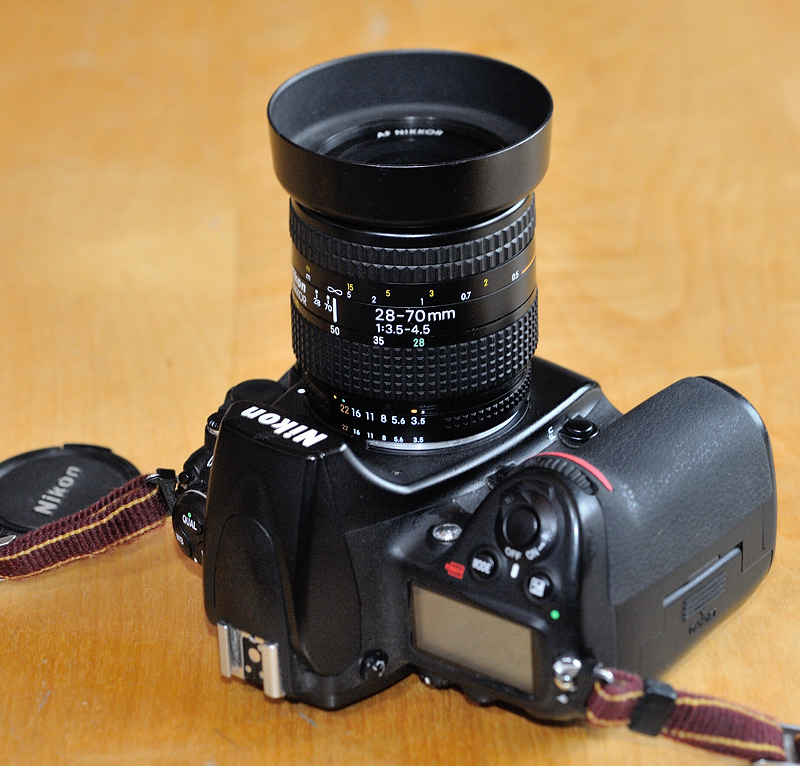
Nikon introduced this compact lens in 1991. It contains only eight elements, but one of them is an aspherical one. One year later, with the introduction of the first AF-D camera, the F90 (N90 in the USA), Nikon also introduced the D-version of this lens. Optically both versions are identical. Currently I own the non-D version. Over the years I have used three samples of this lens with consistent results.
Today you can get a used one on ebay for only about 50.-€, which is a real bargain!

|
|
The 28-70mm f/3.5-4.5 at 50mm mounted on a D700 - a handy combination. |

|

|
|
At closest focus (macro setting) and 70mm the lens reaches its maximum magnification of about 1:4.6. |

|

|
|
In conjunction with a Nikon 4T closeup lens the maximum magnification is about 1:2.6. |

|
|
Lighthouse in southern Iceland in summer 1995. F-801, Fujichrome Sensia, 28mm. |

|
|
Ice-covered stone at the banks of lake Vänern, Sweden in winter 1996. FM2, Fujichrome sensia, 70mm. |

|
|
Tiny little beetle on the way to the centre of its universe. Captured in summer 2004. D70, 70mm, Nikon 4T closeup lens. |

|
|
Sunset at a sand mine near Rheine in Summer 2012. D700, 28mm, F16. |

|
|
Sunset at a sand mine near Rheine in Summer 2012. D700, 70mm, F16. |

|
|
The village of Elduvík, Faroe Islands, Summer 2012. Evaluating corner sharpness @35mm, see 100% crop below. This shot was made hand-held with the Nikon D700 at ISO 400, F11 and 1/160sec. No post-processing was done, the image is just raw converted by Nikon Capture NX2. |

|
|
100% crop of the lower right corner. |

|
|
Monkeyflower (Mimulus guttatus) at a brookside, Faroe Islands, Summer 2012. Evaluating sharpness @70mm, see 100% crops below. This shot was made hand-held with the Nikon D700 at ISO 400, F11 and 1/80sec. |

|
|
100% crop of the lower central area. |

|
|
100% crop of the lower right corner. |